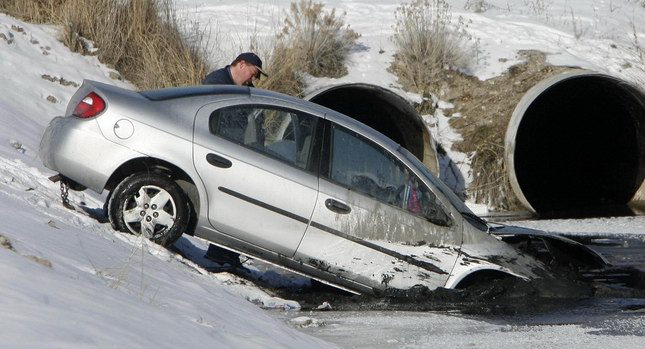If there are two questions that everyone from police to policy makers have asked over the last one hundred or so years of motoring, it’s these: “How do accidents happen?” and “How can we stop them from happening?”
With regards to the first, the Institute of Advanced Motorists (IAM) in the UK has analysed some 700,000 fatal road accidents that occurred over a four year period between 2005 and 2009.
Their so-called Licensed to Skill report aims to identify the leading causes of automotive accidents in the UK, the results of which may surprise you. License to Skill project manager Neil Greig explains:
“It has been an eye-opener. Not just in terms of what causes an accident but in terms of dispelling some of the popular myths,” said Gerig.
“For instance, if you look at Government campaigns they seem to say that speed is the number one problem. But illegal speeding – when drivers exceed the posted limit – accounts for only 13.9 per cent of fatal accidents. A bigger cause [15.9 per cent] is going too fast for the conditions – entering a bend too quickly, for instance – when you might well be under the actual speed limit,” he added.
So what are the leading causes? The biggest single cause is driver error or reaction, accounting for some 65% of fatal accidents in the UK. Next up is injudicious action (31%), which can be broken down into driving too fast for the conditions (15.9%), exceeding the speed limit (13.9%) and disobeying give way or stop signs (2.1%).
 After that we have fatalities attribute to driver behavior or inexperience (28%), which takes into consideration careless and reckless driving behavior and those who are in a hurry (17%), aggressive driving (8.3%) and learner or inexperienced drivers (5.3%).
After that we have fatalities attribute to driver behavior or inexperience (28%), which takes into consideration careless and reckless driving behavior and those who are in a hurry (17%), aggressive driving (8.3%) and learner or inexperienced drivers (5.3%).
Lastly, there’s impairment or distraction (19.6%), which covers alcohol (9.6%) and in-car distraction (2.6%). Only 0.8% of distracted driver fatalities were using a mobile phone at the time. Mr. Greig continues:
“What is just as telling though is the factors that, though they might be key in a small number of accidents, aren’t all that significant. We see a lot of campaigning on issues such as diesel and deposits on the road but that only explains 0.8 per cent of fatal accidents, and being dazzled by headlamps, a factor in 0.4 [per cent] of fatalities.”
And there’s more. Failing to look properly (20.5%), loss of control in no-way-out situations (34%), poor turns or maneuvers (12%) and failing to judge another driver’s path of speed (11.6%) were also major causes. Add to that slippery roads (10.9%) and bad road layouts (3.2%).
The report lists 77 possible causes of accidents altogether, which also includes affection vision, defective eyesight (0.4%) and fatal accidents resulting from stolen vehicles (6.1%), emergency vehicles on call (0.3%) and vehicles in the course of committing a crime (0.4%).
Vehicle defects – which include balding tyres (1.5%) and dodgy brakes (0.7%) – accounts for some 2.8% of fatal accidents.
Gender and age also play a part. Men are more often “carless, reckless or in a hurry” or “travelling too fast for conditions” (hands up anyone who’s surprised at that) while women are more likely to be inexperienced but less likely to be under the effects of alcohol.
Also, older drivers are prone to failing to look properly while younger ones are more likely to be going too fast; either over the limit or too fast for the conditions. UK drivers are more likely to lose control between 7 pm and 7 am and fail to look properly between 7 am and 7 pm.
Drivers were also found to be more likely to be distracted or otherwise impaired on weekends (17%) versus weekdays (10%). Mr. Greig concludes:
“Drivers can learn a lot by reading this and if you take just one thing away from it it’s that paying a little more attention, taking that little bit more time to look properly, will save your life. Mostly, crashes aren’t about cars going dramatically out of control and up in smoke. It’s small errors suddenly having greater consequences. But if you are a good, trained driver, you can avoid becoming a statistic.”
By Tristan Hankins
Story source: Telegraph , Institute of Advanced Motorists




